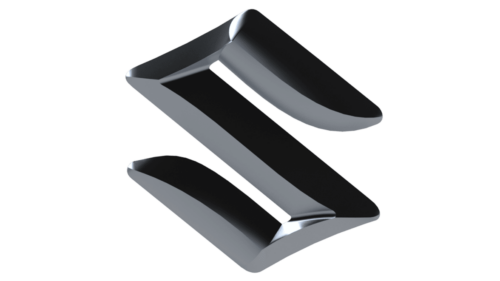In April 2025, Suzuki Motor Corporation unveiled a new logo, marking its first significant update in nearly 40 years. For a brand synonymous with reliable cars, motorcycles, and marine engines, this refresh is more than a visual tweak—it’s a statement of evolution. Rooted in a rich legacy yet tailored for today’s digital and sustainable world, Suzuki’s new emblem reflects its ambition to stay relevant. This article explores the design, context, and meaning behind the change.
From Looms to Legends
Suzuki’s story began in 1909 as a loom manufacturer in Hamamatsu, Japan, before shifting to vehicles in the mid-20th century. The iconic “S” logo, introduced in 1958, became its signature—a sharp, minimalist symbol of ingenuity and reliability. Paired with a blue “Suzuki” wordmark and red accents, it adorned everything from the tiny Suzulight to the mighty Hayabusa, earning global recognition. For decades, this design endured, a testament to its timeless strength. But as the automotive landscape evolved, so did the need for a fresh identity.
The new logo doesn’t stray far from its predecessor, and that’s by design. The “S” retains its angular, samurai-like shape, but with thicker lines and a deeper red hue. The wordmark shifts to a darker blue and a bolder font, enhancing its presence. These changes are subtle yet purposeful, improving legibility on digital screens—think apps or dashboards—while preserving Suzuki’s essence. It’s a practical update for a brand that lives online as much as on the road.
Fans on X have mixed feelings: some call it “crisp and modern,” others shrug that it’s “barely noticeable.” This balance reflects Suzuki’s goal: refresh without reinventing. The redesign likely stemmed from collaboration between internal teams and design experts, though details remain sparse. What’s clear is that it’s built to bridge heritage and innovation.
Why 2025? Timing Matters
The logo’s debut aligns with Suzuki’s strategic shifts. The company is leaning into electrification and compact efficiency, especially in markets like India, where Maruti Suzuki reigns. This update signals its commitment to sustainable mobility, complementing hybrid and electric vehicle launches. It also caters to a digital-first world, ensuring the emblem pops in virtual spaces—a must for a brand with a global footprint spanning 23 countries.
The timing reflects broader industry trends, too. As cars become smarter and more connected, brands need identities that resonate across platforms. Suzuki’s tweak positions it to compete with both legacy automakers and electric upstarts, reinforcing its adaptability.
Impact on Suzuki’s Future
The new logo carries quiet symbolism. The richer red suggests energy and resolve, echoing Suzuki’s scrappy roots. The darker blue conveys trust and stability, reassuring fans that the brand’s core remains intact. The “S” still hints at Japanese heritage—think katana precision or calligraphy—blending tradition with a modern edge. It’s a visual promise of progress grounded in history.
This isn’t just a logo—it’s a cornerstone of Suzuki’s identity. The 1958 version promised reliability; the 2025 one adds relevance. It unifies the brand across its divisions—cars, bikes, and boats—strengthening its global appeal. For motorcyclists, it elevates icons like the V-Strom; for car buyers, it hints at a forward-thinking Suzuki ready to tackle new challenges.
Public reaction varies, with some embracing the update and others questioning its necessity. History suggests acceptance will grow—similar subtle shifts worked for brands like Volkswagen. Looking ahead, the logo sets the stage for Suzuki’s next moves, from electric models to tech partnerships.
Evolution Done Right
Suzuki’s new logo is evolution, not upheaval. It honors a 115-year legacy while embracing a digital, eco-conscious future. The thicker “S,” deeper red, and bolder blue signal intent: Suzuki is adapting, not fading. As the automotive world races forward, this emblem ensures the brand remains a steady, recognizable force—proof that even small changes can carry big meaning.


